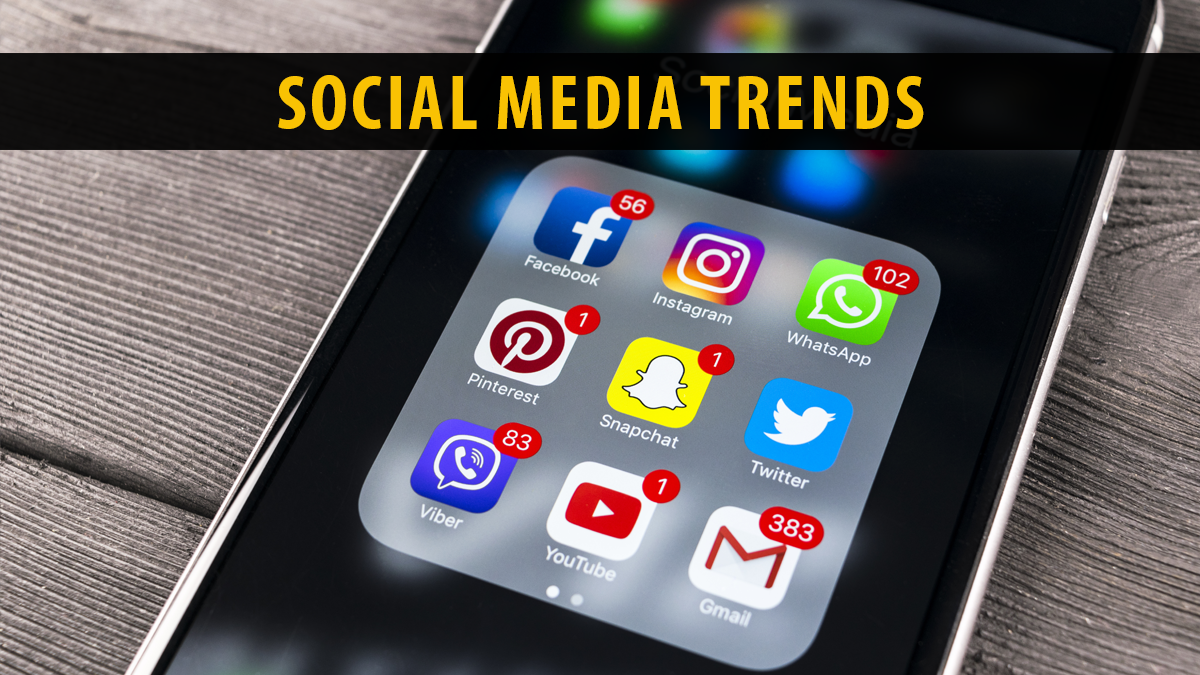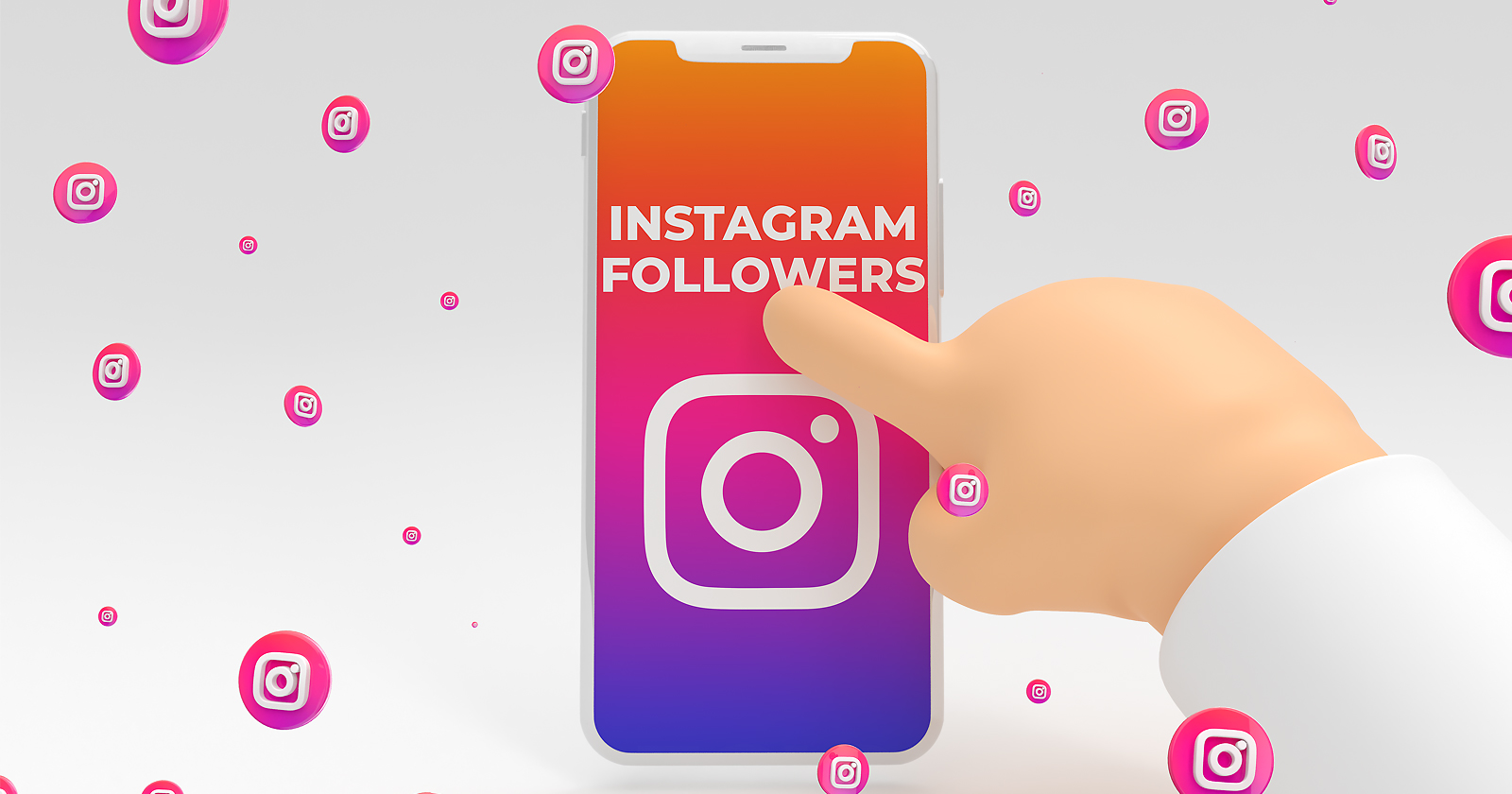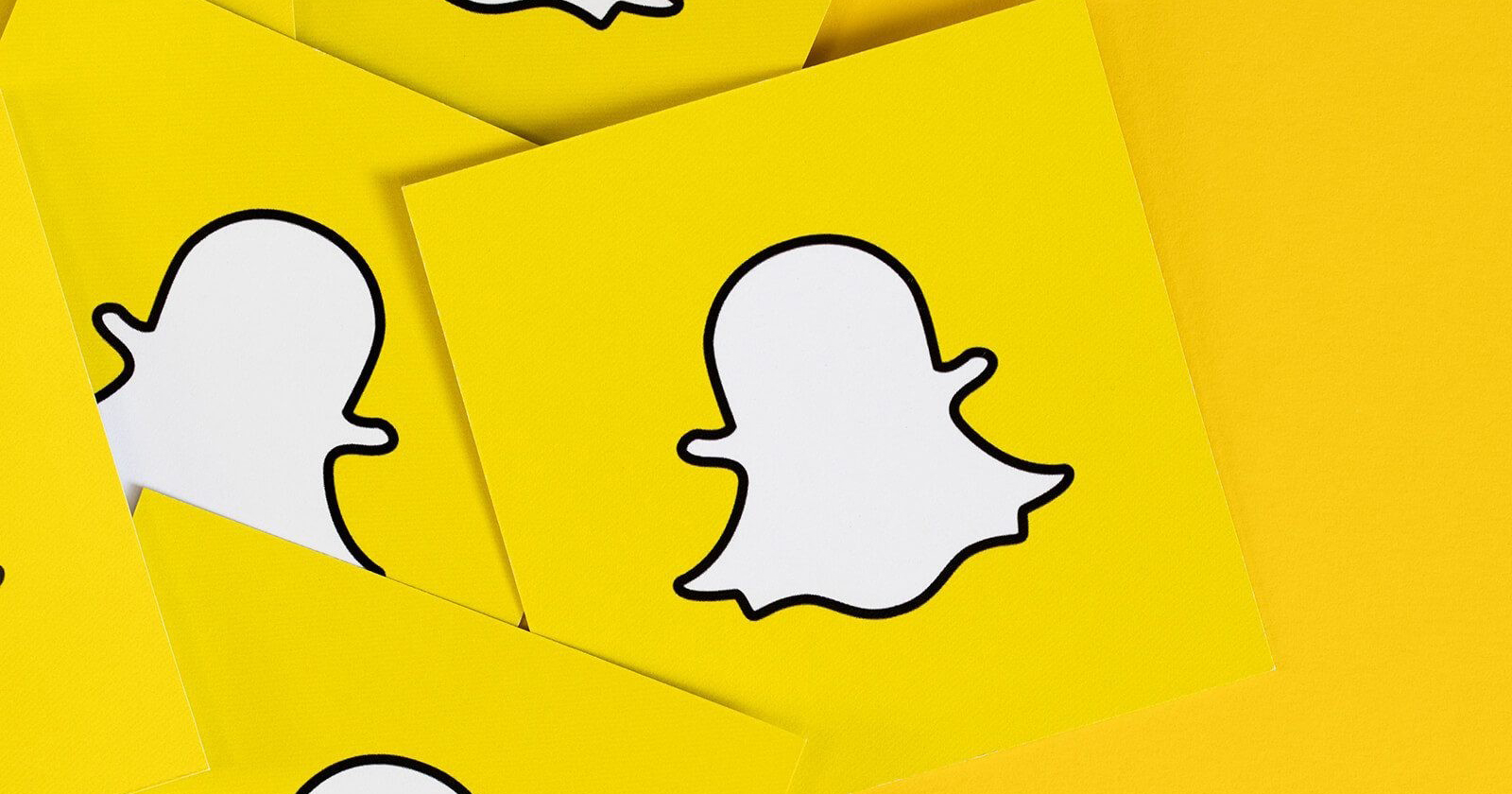It’s truly amazing how social media has become such an integral part of our lives in such a short period of time. Starting our day with it and ending it with it gradually became a habit and a way to communicate with friends and family who live far away. And it has now evolved into a critical tool for businesses to reach out to their customers.
Companies are rushing to get on board with social media because they see the potential it has for reaching their target audience. They’re devising ingenious strategies to engage with people and build their brand through these platforms.
It’s been captivating to see the growth of social media and how it has influenced people. Every day new trends emerge on a regular basis, and everyone, including companies, keeps up to compete. But, in the end, it all comes down to adapting to these social media trends and developing unique ways to stand out.
23 Social Media Trends to Watch Out For in 2025
We recently took a peek at some interesting global trends for 2025. These trends impact various industries significantly and might even revolutionize how you go about your work. If you have hired a social media marketing agency, they will keep you updated on all the latest trends. However you manage your social media accounts on your own, dive in and see what’s in store!
AI Will Transform Everything

You already know what’s really popular right now. ChatGPT and Jasper.ai are two AI writing and marketing tools. So it’s easy to see why they’re becoming so popular. In fact, ChatGPT attracted over a million users within a week of its launch. Isn’t that impressive?
Anyway, the thing is, these AI tools are proving to be quite handy for brands looking for content ideas for their social media platforms. It’s like having your own personal assistant who can come up with all kinds of creative ideas.
But let’s be honest. As impressive as AI is, it can only partially replace human writers in areas such as creativity, thought leadership, and originality. There’s something unique about the human touch that AI can’t quite match.
So, here’s the situation. Companies that strike the right balance and avoid over-reliance on AI tools are likely to thrive. This is because they recognize the significance of retaining the human element in their content. People, after all, want to connect with brands on a personal level, right?
And guess what? With AI tools becoming more widely available, we may see some new players entering the market in the near future. It’s an exciting time, my friend. The options are limitless!
The Importance of Managing Social Media Crises

You know, with the way things are going, social networking is quickly becoming a go-to tool for crisis management. It’s no secret that we live in a digital age where information spreads like wildfire, especially on social platforms. And as a result, brands can soon find themselves facing a crisis pretty quickly.
It’s worth noting that a recent Twitter survey found that 61% of respondents felt brands should mention disasters in their advertising and marketing. That’s a lot of people! When issues arise and are left unresolved, they can snowball into major problems that can seriously harm a brand’s reputation. It’s a challenging situation to be in, but here’s where social media comes to the rescue.
Social Media Becomes the Go-To Place for Online Searching

Hey, guess what? Many people these days, particularly younger generations, use social media platforms to conduct online searches. It’s actually becoming a big deal! Even Google has admitted that approximately 40% of searches are conducted on platforms such as TikTok and Instagram. So it appears that social media is becoming a go-to source for information. Isn’t that fascinating?
With this shift in user behavior, brands are realizing that in order to be easily discovered on social media, they must optimize their posts with the right keywords. It’s similar to SEO, but specifically for social media. You may be wondering if social media will eventually overtake Google as the go-to search engine. Well, I wouldn’t be surprised if that thought crossed your mind. However, the answer is no.
Google still dominates the search engine market, holding over 90% of the share. So without a doubt, it is the industry’s most prominent challenger. However, with the increasing number of people conducting searches on social media, it’s a good idea for you to start implementing SEO strategies for your social media posts. As a result, your content will show up for relevant searches and reach a wider audience.
Also Read: Travelers Consuming More than Ever Travel Videos Content on YouTube!
Inclusivity Remains in the Spotlight
Social issues are receiving greater attention than ever from people worldwide. When a business supports a cause close to their hearts, people feel a closer connection to it.
For instance, the famous pancake mix and syrup company Aunt Jemima changed their emblem over racial insensitivity complaints in 2020. The parent business, Quaker Oats, withdrew the old graphic that showed a stereotyped portrayal of a Black woman. Recognizing the racial stereotypes that gave rise to the brand, they pledged to develop a new, inclusive brand and identity that encourages respect and equality. This modification was an effort to overcome racial prejudice and embrace diversity in the food sector.
In light of this, inclusion is anticipated to have a big impact on the social media landscape both now and in the future. Businesses can improve relationships with their audience and boost the credibility of their brand by incorporating this trend into their marketing efforts and keeping their promises to clients.
Beginning of YouTube Shorts
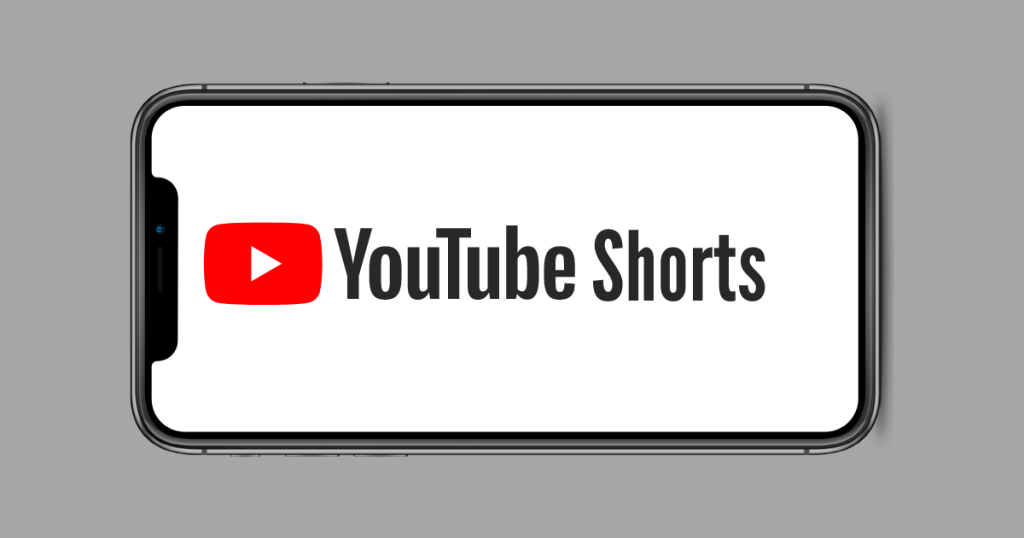
Did you know that YouTube Shorts have recently grown in popularity? According to Statista, they receive approximately 30 billion views per day worldwide! Short-form videos appear to be gaining popularity among users these days.
One intriguing aspect of YouTube Shorts is that creators who use this format are actually able to attract more viewers to their longer videos. It’s similar to a teaser or a sneak peek that sparks curiosity and encourages people to check out the full-length content.
I’m sure most of you are familiar with Instagram Reels, right? Well, here’s the scoop: YouTube Shorts and Instagram Reels are quite similar because they both allow you to create and share those quick, entertaining videos. However, YouTube Shorts leans more towards longer videos and offers some excellent editing features and ways to earn money. At the same time, Instagram Reels is all about that visual appeal and discovering cool content right within the Instagram app.
What’s even better is that YouTube intends to introduce monetization options for Shorts. This means that brands and creators can profit from their short videos, making them even more eager to utilize this feature and reach a wider audience. It’s fascinating to see how social media trends evolve, and YouTube Shorts is making its imprint in the online video world!
Also Read: Mastering Instagram Reels Ads: A Comprehensive Guide
TikTok Continues to Dominate the Social Media Scene
You should be aware that TikTok will continue to be a huge success. This is because short videos are no longer just a passing fad. Initially, it was all about people, particularly young people, displaying their dance moves and other talents. But it has now evolved into something more.
Thanks to adding features such as ads and company’s profiles, TikTok is quickly becoming a significant player in the social media scene. Businesses are taking advantage of the opportunity and can use TikTok to showcase their products or services through short and creative videos. It’s an excellent way for them to connect with their target audience and raise brand awareness. And the best part? These videos give a quick overview of what the company has to offer. Pretty neat, huh?
Increased Engagement with Full-Screen Content

Did you know that full-screen content on social media is gaining popularity? Nowadays, people enjoy the convenience of being able to view content without having to turn their devices horizontally. It’s all about giving users a seamless experience.
And here’s an interesting fact for you: vertical videos have a 90% completion rate. This is because people are more likely to watch the entire video when it is displayed in full-screen mode. It’s a clear indication of increased customer engagement. Following TikTok and Instagram, YouTube and Facebook have also jumped on board and now support full-screen vertical videos. They’ve realized that this format is what users want and are making changes to accommodate it.
No wonder brands are shifting towards full-screen videos with an aspect ratio of 9:16. They want to make it easy for the user to watch the videos. Ultimately, it comes down to meeting the
preferences of the users and providing an enjoyable viewing experience.
How Integrations Impact User Engagement on Social Media
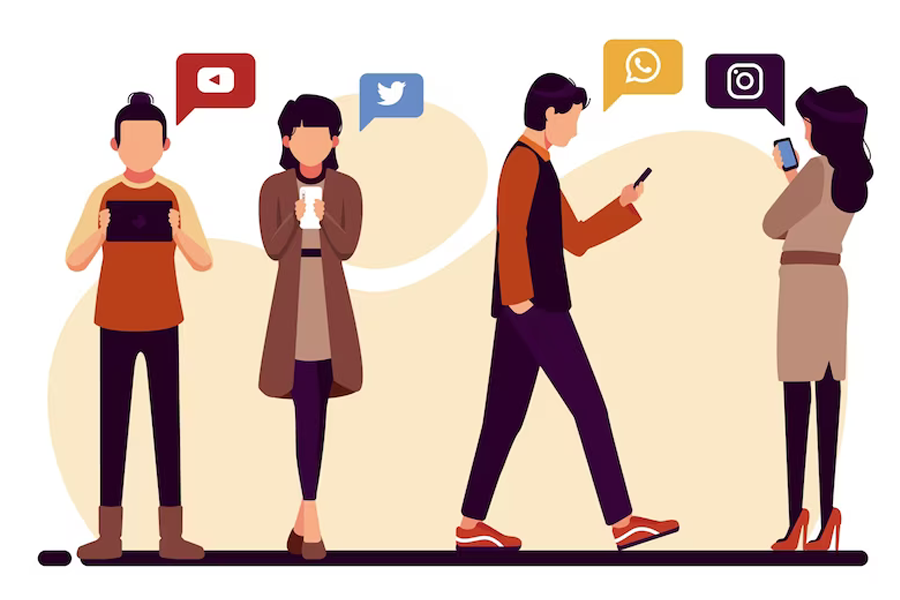
Integrations are what’s really exciting in the world of social media right now. They’re the next big thing that everyone is talking about. And guess what? These integrations have the potential to change the way users interact with social media.
Simply look at Facebook. They’re always ahead of the curve, and they’ve recently integrated digital avatars into the metaverse. This change is all about increasing user engagement and making the experience more immersive and enjoyable. But Facebook isn’t the only company experimenting with integrations. Instagram is also getting in on the action. They are investing in integrations to empower creators and enable them to create content in the metaverse. It’s all about unleashing their creativity and pushing it to new heights.
And here’s the really exciting part: as the metaverse becomes more popular, we can expect to see a lot more of these integrations across various social media platforms in 2025 and beyond. Users are entering a whole new world, and the possibilities are limitless!
Social Commerce Keeps Growing
A lot of brands are already leveraging the power of social media to sell their products and enhance their profits. Platforms like Instagram and Facebook have become popular places for businesses to display and advertise their waves.
Guess what? Social commerce is expected to be worth $80 billion by 2025! It’s incredible how much potential there is in exploiting these channels to increase sales and revenue. But here’s the thing: social media isn’t just for celebrities anymore. In 2025, we’ll see more and more retail businesses taking advantage of Instagram Storefronts, shoppable posts, and other features to drive sales and increase their profit margins.
If you’re considering capitalizing on social commerce this year, select a design that provides a smooth and hassle-free purchase experience. After all, you want your customers to have a smooth journey from browsing to purchasing.
Gaming Takes Over as the New Social Media Hub

The gaming industry is expected to be worth over $200 billion by 2025! Are you serious? Now for the exciting part: the growth of the gaming market has significant implications for both businesses and social media. Because social media has established itself as a powerful advertising platform, brands now have an excellent opportunity to enter the gaming market in 2025. Without a doubt, it changes the game.
Consider this: brands can organize live events and competitions on social media specifically for gamers. They can then use the power of these social conversations to turn them into profitable business leads. It’s a no-lose situation!
Brands and companies are likely to host gaming-related events to attract more followers and to expand their reach. Some brands also form an alliance with gaming firms to collaborate on intriguing projects. This way, they can capture the gaming community’s attention and capitalize on this thriving industry. So, brace yourself for a whole new level of brand engagement and social media buzz as gaming takes over the world in 2025!
The Importance of Being a Genuine Brand
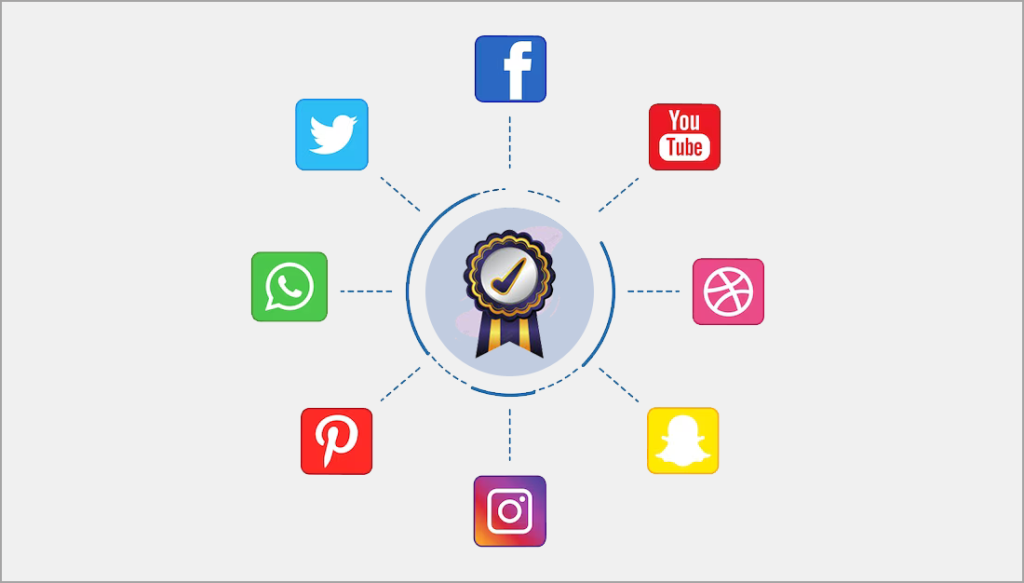
Check this out: over 80% of customers place a high value on brand authenticity and transparency. It turns out that people are more likely to buy from brands they know and trust rather than gamble with unfamiliar businesses.
Considering this trend, businesses nowadays increasingly recognize the value of establishing authenticity, genuineness, and thought leadership. As a result, they’re investing a significant amount of time, effort, and money, to ensure they come across as trustworthy to their customers.
What’s even more fascinating? LinkedIn, Twitter, and Facebook have evolved into critical tools for businesses to effectively showcase their authenticity and connect with their target audience. It’s their go-to place to interact with customers and establish trust.
Gated Content is Becoming Popular

Users are no longer enthralled by social media posts that are suggested to them at random. Instead, content that is tailored to their interests captures their attention. That is why gated content is becoming more popular.
Gated content is content that is only accessible to subscribers and top fans. Brands are recognizing this trend and are expected to create gated content using features such as Instagram Subscribers and Facebook Top Fans. This allows them to strengthen their bonds with their most devoted supporters.
Gated content is an excellent strategy for businesses looking to strengthen their bonds with their prospects. As a result, it will be a prominent trend in 2025, assisting brands in improving their connection with their audience.
Midway Storytelling Continues

The art of midway storytelling is here to stay. Reading a long narrative from start to finish can be tedious, but stumbling across a story halfway in the midst is guaranteed to pique your interest.
In fact, in the latest social media trends of 2025, narrating a story midway has become a common approach to grabbing people’s attention. Think about it – what could be more captivating than leaving them wanting to know more?
Companies are utilizing this strategy to tell brand stories, build trust with their followers, and eventually drive their conversions. It’s an effective method that keeps people involved and impatient to learn more.
Memes

Memes are literally everywhere these days; it’s as if you can’t get enough of them! Finding someone who doesn’t like memes is like trying to find a needle in a haystack. Memes, however, are not just random hilarious pictures or movies. Instead, they are one of the most innovative types of content available, and people adore them. In fact, they are currently, like hot cakes in the market.
The beauty of memes is that they can be customized to match any scenario or message. With a bit of imagination, you can create a meme that precisely catches the core of what you’re trying to communicate. It’s like elegance crossed with humor!
What’s even more amazing? Memes tailored to a specific market. They are an excellent approach for producers to connect with their audience and promote a business while maintaining the fun element. It is a win-win situation. You may interact with your audience and advertise your brand while entertaining them.
In fact, memes will be a significant tool for brands to communicate with and create relationships with their target audience in 2025. It’s as if memes have made it possible for brands to conduct genuine discussions with their customers. How cool is that?
Increased Use of Social Media for Customer Support

Did you know that social media customer service is expected to increase in the coming years? Customers are hoping for personalized and timely responses from brands in the post-COVID era, rather than generic automated messages. The demand for more authentic relationships between customers and brands is driving this trend.
To give these one-on-one solutions swiftly, brands have turned towards social media platforms. By using social media, businesses can establish authentic relationships with their customers, which can be the foundation for long-term customer loyalty.
Interestingly, a survey found that 64% of Twitter users would instead contact a dedicated support handle on social media rather than call a business. This demonstrates that customers are increasingly relying on social media as their primary method for obtaining support. Given these circumstances, companies will likely prioritize providing dedicated customer support through their official social media accounts as part of their social media strategy. This trend underscores social media’s growing significance in the customer service landscape.
Social Videos Will Have Closed Captioning by Default
According to surveys, around 85% of videos are viewed discreetly, particularly in public locations, by social media users. The increased use of captions, however, is shifting this pattern. Because of the rise of short-form platforms like TikTok, videos with captions have an 80% better probability of being watched in full.
Captions are planned to become the default for all published videos by 2025. Three major factors are driving this transition. First, captions promote accessibility, benefiting people working in noisy workplaces and those with hearing issues. Second, captions increase viewer engagement by keeping viewers interested until the finish. Finally, captions improve video discoverability by optimizing them for search engines.
To keep up with this trend, content creators should learn how to add closed captions to their videos. It is also advised to vocalize crucial terms in the videos to ensure they appear in the captions. The auto-captioning feature on TikTok can be a time-saving choice. Captions can help make videos more inclusive, entertaining, and discoverable in the ever-changing social media content landscape.
User-generated Content to Gain Momentum
User-generated content (UGC) is content created by normal social media users. Brands are increasingly using UGC as social verification of the quality of their products or services. Brands can save money on marketing by showing UGC while demonstrating consumer happiness and loyalty.
Nowadays, many brands are actively incorporating UGC into their branded content initiatives. This strategy has two key benefits: first, it aids brands in saving money on creating unique content with UGC material. Second, it allows brands to spotlight and cherish their customers, generating stronger connections and brand loyalty.
One of UGC’s primary qualities is its genuineness. Because brands have no control over what consumers say or publish, UGC is a highly reliable source of information about a brand or business. It provides accurate insights into real customer experiences, assisting others in making educated decisions and increasing market openness.
The trend of boosting UGC is predicted to continue. Brands will increasingly encourage their customers to create UGC since it increases engagement and improves brand perception. Including user-generated content (UGC) in your social media calendar will help you make an engaging and real image for your brand.
Goodbye to Third-Party Cookies

Surprisingly, a staggering 95% of users reject third-party cookies. Cookies are designed to be a great tool for brands or marketers to tailor content for users, but they are becoming increasingly frustrated with them. In addition, many people value privacy issues over cookie benefits.
Finally, some good news regarding the third-party cookies came out that they will become obsolete. Google stated that these cookies will be phased out of Chrome by next year, i.e., 2025. This move will likely influence how advertisers target and track users online significantly.
In the following year and beyond, more privacy-focused measures are anticipated to be implemented. To attract and retain followers, businesses and brands, particularly those on social media, will have to prioritize customer privacy and openness. In addition, it will be important to gain users’ trust and ensure their faith in the brand.
Social Audio Will Become More Popular
Social audio is set to be a big trend in 2025 and beyond, and the numbers don’t lie. A survey by Hootsuite revealed that a whopping 74% of businesses are interested in investing in audio-only content. This obviously demonstrates the industry’s tremendous interest in exploring the potential of social audio.
One platform that has already gained significant popularity is Clubhouse, an audio-based social networking platform that took off in 2020. Its fascinating audio interactions have become a popular destination for online users. Not wanting to miss out, Facebook has also entered the fray with the introductions of Live Audio Rooms, Soundbites, and podcasts, emphasizing the importance of audio in social interactions.
The emergence of established platforms in the social audio arena, such as Clubhouse and Facebook, implies increased rivalry and serves as a strong indicator of the trend’s momentum. As we all know, fierce competition drives trends and creativity. With such business interest and funding, social audio is positioned to become a significant force in the social media landscape, giving a new and immersive way to interact and engage with others through audio discussions and experiences.
LinkedIn Influencers Will Thrive
Let me explain the word “LinkedInfluencer.” It may appear strange initially because LinkedIn is not generally linked with influencers. But, believe it or not, that is precisely what is happening in 2025.
LinkedIn, as opposed to other social media networks where everyone can have a presence, is geared toward professionals and industry leaders. It’s a specialized area for networking and showing your knowledge with like-minded people.
Regarding LinkedIn, the concept of influence is still very new. But, on the other hand, the platform has taken note and implemented some unique tools to assist this trend. LinkedIn Creator Mode, for example, enables professionals to tailor their profiles for generating and sharing interesting content.
But that’s not all. LinkedIn has also launched a creator accelerator program, to assist individuals in expanding their reach and growing their following on the network. These initiatives are intended to encourage professionals to create high-quality content, position themselves as experts in their field, and communicate with their audience more regularly.
Brands to Keep Spending on Influencer Marketing
It appears that influencer marketing is going to remain a dominant force in 2025 and beyond. However, some changes regarding how brands and influencers collaborate are in the works. For example, instead of a single promotional post, the brand will now collaborate with influencers on a series of media promotion posts. In addition, they will make an equal effort to promote the content created by these influencers, which is a pretty cool development.
More prominent brands are expected to collaborate with micro-influencers and niche bloggers to bring inclusivity and transparency to their marketing efforts. This means they’ll be more picky when it comes to influencers and will crack down on imposters who rely on fake followers. Influencers can no longer simply post a photo of themselves with a product and call it a day. They must now improve their game and create more engaging content for brands. Consider long-form content, how-to videos, demonstrations, and photo stories.
Social media platforms offer exclusive monetization options to support influencers and help them secure their future. Platforms such as Facebook and YouTube have even introduced paid subscription models, giving followers access to exclusive content. It’s undeniably a popular social media trend right now.
Influencer marketing is here to stay, but with these exciting changes, it will be a whole new ballgame for brands and influencers alike.
Augmented Reality is Becoming Popular
Augmented reality is poised to become a mainstream technology. Not only is
virtual reality (VR) making waves, but so is augmented reality (AR), which aims to enhance our real-world experiences. Surprisingly, social media platforms are also joining the trend, incorporating VR and AR to provide users like you with more immersive and captivating experiences.
While VR is still in its early stages of adoption, AR has already made its way onto popular platforms such as Instagram and Snapchat. These apps are using AR to enhance their visuals to the next level. , For instance, take a look at Snapchat’s photo filters. You can use Augmented Reality (AR) to transform yourself into cute animals, try out virtual makeup, rock some cool sunglasses, and even change your appearance. It’s all about injecting a little touch of fun and creativity into your photos and videos.
But AR is more than just cool filters. It is also being used in practical applications. Consider being able to try out things before purchasing them. That is possible with augmented reality! For example, you can utilize augmented reality to see how that new piece of furniture will fit in your living room.
If you’re looking for fashionable shades, you may virtually try on different pairs to discover which suits you best. When it comes to improving our shopping experiences and making more informed selections, augmented reality brings up a whole new universe of possibilities.
So prepare yourselves to greet the future of Augmented Reality! Although, it’s not just about filters and having fun; it’s also about useful apps that can make your life easier and more enjoyable.
Sustainability and the Environment Matter Now

Sustainability and eco-friendliness, two buzzwords that everyone uses, have gained significant importance. They are no longer straightforward platitudes; people are taking them seriously. Consumers today prefer concrete actions over mere talk.
This has enormous repercussions for brands. Consider a company that professes to prioritize tree preservation. Customers now expect them to take tangible actions in response to this issue. They want proof that the brand is actively making a positive difference.
As a result, brands are now expected to utilize their social media platforms to promote their products or services and demonstrate their environmental commitment. But, again, it’s about showing that they actually care about the world we live in.
How is Social Media Changing in 2025
In 2025, social media is undergoing significant transformations, influencing how we connect, share information, and consume content. Several key trends are reshaping the social media landscape.
Nowadays, there are more cases of accounts being hacked and misuse of many people’s personal information, including celebrities. So, primarily the focus is on increasing privacy and data security. Social media platforms are responding by applying stricter data policies, enhancing encryption, and providing users with more fine privacy settings.
Secondarily, the rise of augmented and virtual reality (AR/VR) is transforming social media experiences. Platforms increasingly integrate AR filters and effects, allowing users to create immersive and interactive content. In addition, VR-powered social networks are also gaining popularity, allowing users to connect and interact in virtual worlds.
Another notable shift is the growing importance of video content. Short-form videos, live streaming, and stories have all emerged as dominant formats across multiple platforms. Social media platforms are adapting by improving their algorithms and introducing new video creation, editing, and discovery tools.
Furthermore, Social commerce is slowly gaining popularity. E-commerce is increasingly being integrated into social media platforms such as Instagram and Facebook, allowing users to discover, browse and purchase products without using other applications. Influencer marketing is also evolving, focusing on micro-influencers and authentic content.
Finally, there is a greater understanding of the need to combat misinformation and promote digital well-being. As a result, social media platforms are implementing fact-checking mechanisms, making content recommendations more transparent, and promoting mental health resources.
Conclusion
So to wrap it up in short, there will be several exciting social media trends coming up in 2025 that will significantly impact on both users and brands. If you haven’t already jumped on board with these trends, now’s the time. It’s all about maximizing your brand’s presence on social media and staying ahead of the competition. Trust me; you don’t want to miss out on this!
FAQs
What are the latest social media trends?
Social media trends are popular and emerging practices, techniques, and features that dominate the social media landscape at any given time.
Why should I keep up with the most recent social media trends?
Following social media trends can assist you in remaining relevant, engaging your audience, and effectively leveraging the most recent tools and strategies to grow your online presence or business.
What are the advantages of keeping up with social media trends?
Keeping up with social media trends allows you to modify your social media strategy, connect with your target audience more effectively, increase engagement, and stay ahead of your competitors.
What are the most recent social media trends?
Staying informed through industry blogs, following social media influencers, attending conferences or webinars, and monitoring social media platforms for new features and changes can help you identify the latest social media trends.
Are all social media trends appropriate for every business or person?
Not every social media trend is appropriate for every business or individual. Therefore, before implementing trends, it is critical to evaluate them in light of your goals, target audience, and the nature of your brand or content.
What are some of the most common social media trends in 2025?
Some common social media trends in 2025 include augmented reality (AR) filters, ephemeral content (e.g., Stories), influencer marketing, video content, personalized user experiences, and social media marketing.
What are the best ways to incorporate social media trends into my marketing strategy?
To incorporate social media trends into your marketing strategy, begin by researching and comprehending them, determining how they align with your objectives, experimenting with new features, and analyzing the results to optimize your approach.
Do social media trends shift often?
Yes, social media trends change frequently due to changing user preferences, technological advancements, and platform updates. Therefore, it is critical to monitor and adapt to the evolving trends regularly.
Can social media trends aid in increasing my engagement and reach?
Yes, keeping up with social media trends relevant to your target audience can help you increase engagement and reach by allowing you to create content that resonates with your followers and takes advantage of popular features.
How can I assess the effectiveness of implementing social media trends?
You can track metrics like follower growth, engagement rates, click-through rates, conversions, and overall reach to determine the success of implementing social media trends.
